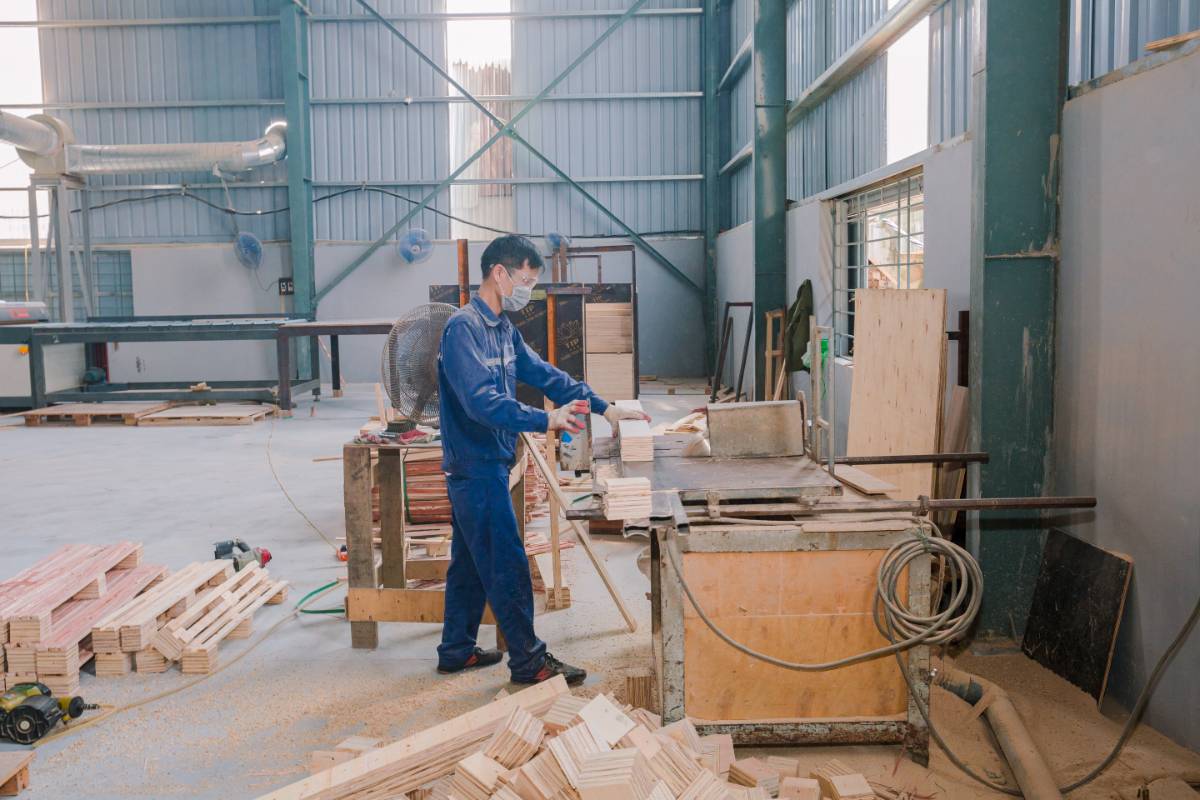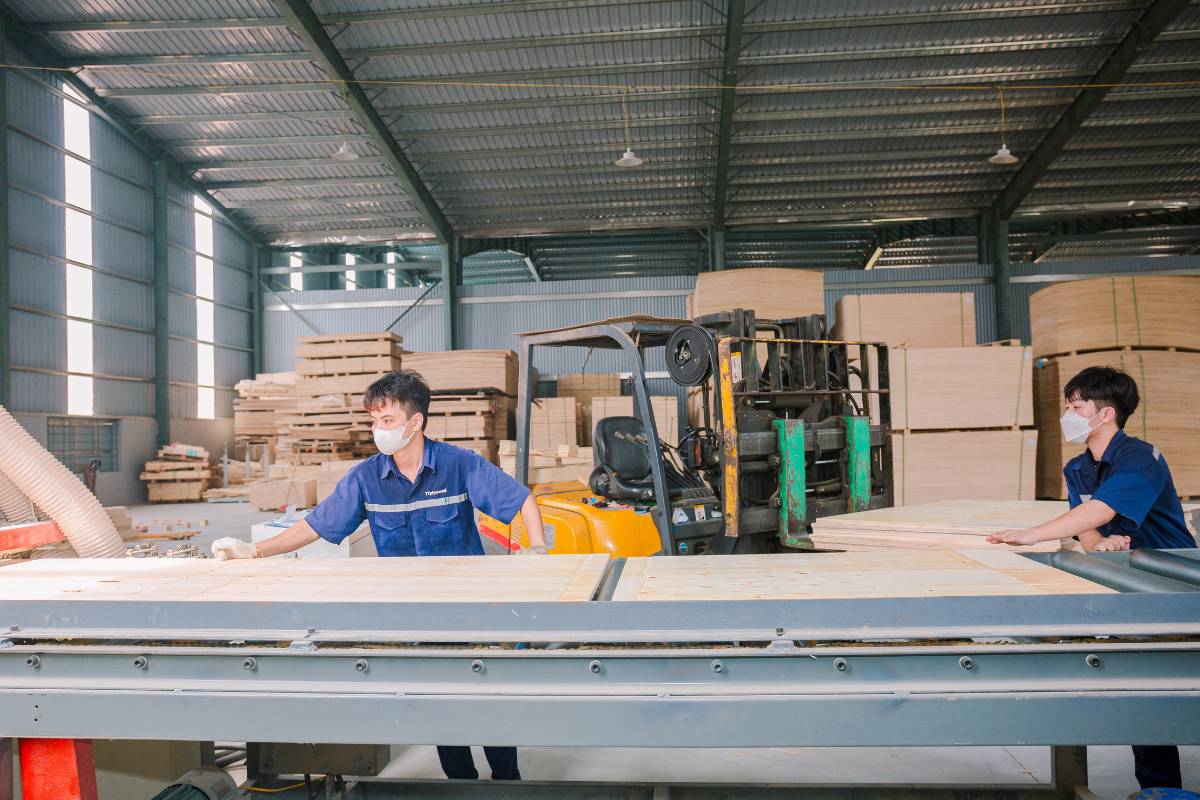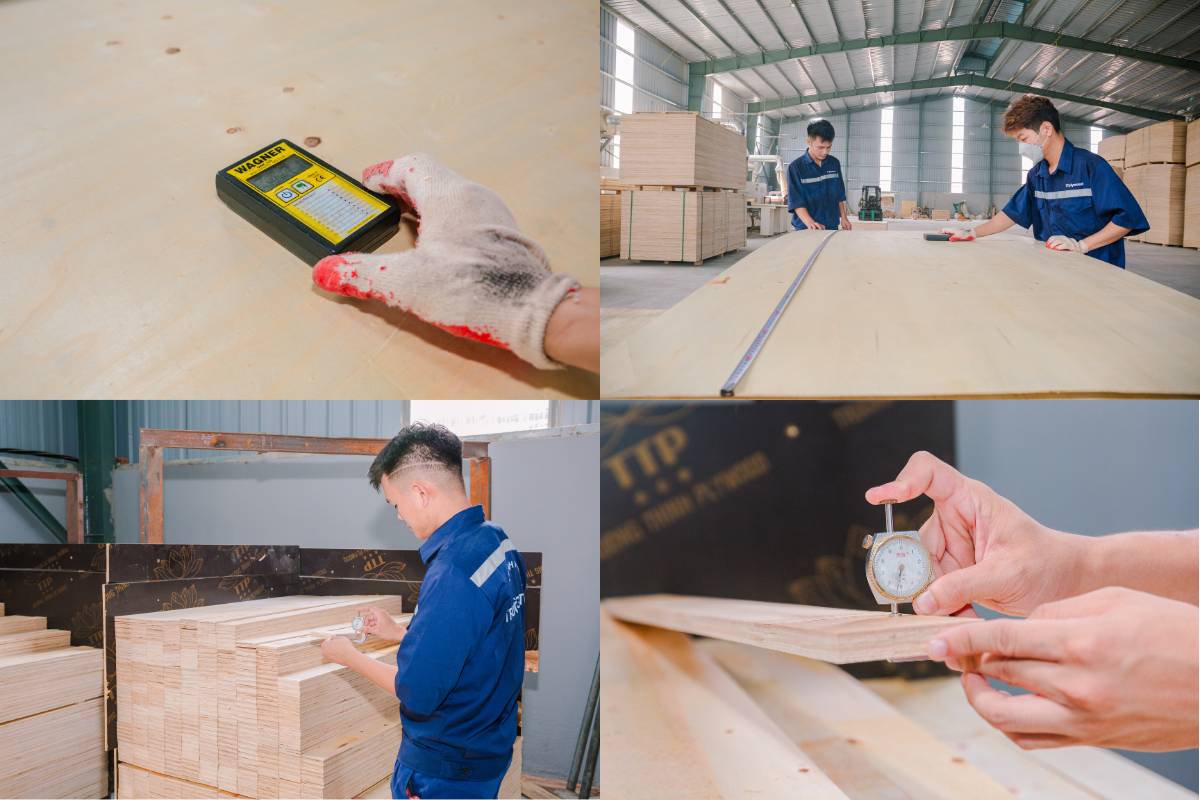
Exploring the film-faced plywood factory
The production of film-faced plywood is a complex process that requires a seamless combination of advanced technology, skilled labor, and quality materials. To gain a better understanding of a film-faced plywood manufacturing plant, we need to delve into each aspect, from raw materials and production processes to quality standards and practical applications of the products.
Raw Material Selection Process
The types of wood typically used for production include acacia, eucalyptus, pine, and other varieties, depending on the quality and intended use of the final product. Material selection is based not only on criteria such as durability and material properties but also on the origin of the wood.
To ensure the highest quality wood panels, factories usually implement strict inspection processes. Criteria such as moisture content, defects, dimensions, and color of the wood are carefully evaluated.
Wood Treatment and Cutting Process
After selecting the raw materials, the wood is treated and cut to the required dimensions. To ensure accuracy and uniformity, factories often use modern machinery such as saws, wood peeling machines, and CNC cutters. This process requires workers to have high skill and experience to operate the machinery appropriately.

Process of cutting boards on demand
Pressing Process
Once all materials are prepared, thin panels are stacked in a specific order, alternating between horizontal and vertical layers to enhance the structural strength of the product. The pressing process is divided into two phases: hot pressing and cold pressing.
Film Coating Process
Film coating is one of the most critical steps in the production of film-faced plywood, determining the product's water resistance and aesthetic surface. The coating film is typically made from phenolic or melamine resin, which has water-resistant, scratch-resistant, and heat-resistant properties.

Film pressing process
Quality Control
After the film coating process is complete, the panels undergo rigorous quality inspections. Factors checked include thickness, hardness, water resistance, and ensuring that the surface is free from scratches and cracks. Additionally, criteria regarding shape and dimensions must meet technical standards.

Plywood inspection process before packaging
Packaging and Transportation
Once the plywood panels pass quality control, they move to the packaging stage. First, each panel is wrapped in a protective layer of plastic or kraft paper to prevent scratches or damage during transportation. The panels are then stacked in groups and secured with steel or plastic strapping. The number of plywood panels in each package depends on the size and weight of each panel, as well as customer requirements.
The production of film-faced plywood is a meticulous process requiring multiple detailed steps. From selecting raw materials, treatment, gluing, pressing, sanding, cutting, film coating, to quality inspection, each stage is carried out under strict supervision. Each step plays a vital role in creating the final product—high-quality film-faced plywood panels available in various sizes that meet diverse usage needs across many fields. We hope this article provides readers with a deeper insight into the technology of film-faced plywood production and a greater appreciation for the quality products created by human hands.










